If you are a teacher, you recognize these students: The student who substitutes the arc of a bird’s flight for her arithmetic lesson while staring out the window. If you applied Krazy Glue, he wouldn’t be able to keep his behind in the chair. Whoever responds “Mrs. M, do you color your hair?” to the question “What body of water had a significant part in the establishment of Ancient Egyptian civilization?”
Students displaying the characteristic signs of ADHD, including inattention, hyperactivity, and impulsivity, can be difficult. You recognize their intelligence, yet they cannot seem to concentrate on the stuff you are attempting to provide. In addition, their conduct distracts from instruction and disrupts the entire class.
Students diagnosed with ADHD may:
- By speaking out of turn or wandering about the room, one might command attention.
- Have difficulty following instructions, particularly when they are provided in a list, and with activities requiring sequential stages, such as lengthy division or calculating equations.
- Frequently neglect to write down homework assignments, complete them, or bring in finished work.
- Frequently lack fine motor control, making note-taking and reading handwriting challenging.
- Have difficulty with long-term tasks that lack direct supervision.
- They may even impede the group’s ability to complete the assignment if they do not contribute enough to group projects.
Consider what the educational environment needs of children: Sit still. Listen quietly. Pay close heed. Follow the directions. Concentrate. These tasks are difficult for children with attention deficit hyperactivity disorder (ADHD or ADD), not because they are unwilling, but because their brains won’t allow it. Obviously, this makes educating them more difficult.
Children and adolescents with ADHD frequently pay for their issues with poor grades, reprimands and punishments, taunting from classmates, and low self-esteem. Meanwhile, you, the teacher, feel bad because you are unable to reach the child with ADHD, and you receive complaints from parents who believe their children are being mistreated. However, it need not be this way. You may apply tactics to help children with ADHD overcome learning obstacles, maintain concentration without distracting others, and achieve in the classroom.
How Educators Can Assist Children With ADHD
How then can you instruct a child who refuses to quiet down and listen? Answer: with a great deal of persistence, imagination, and consistency. As a teacher, it is your responsibility to analyze the specific needs and strengths of each student. Then you may build techniques to assist children with ADHD concentrate, remaining on task, and maximizing their learning potential.
- Effective interventions for children with ADHD include the three components outlined below.
- Accommodations are what can be done to facilitate learning for students with ADHD.
- Instruction refers to the procedures used to instruct.
- Intervention: The means through which you prevent disruptive or distracting student behavior.
However, the most effective technique for assisting a kid with ADHD is a positive outlook. Make the student your collaborator by stating, “Let’s find out methods to assist you complete your assignment together.” Assure the student that you will be on the lookout for excellent conduct and great work, and when you observe it, provide real appreciation. Finally, search for methods to inspire a kid with ADHD by introducing point or token-based incentives.
Dealing With Disruptive Classroom Behavior
Develop a few warning signs with the student with ADHD to prevent other pupils from engaging in time-consuming conduct. This might be a hand signal, a subtle shoulder squeeze, or a post-it note on the student’s desk. Discuss the student’s actions in private if necessary. And attempt to tolerate somewhat incorrect conduct if it is inadvertent, does not distract other pupils, and does not interfere with the lesson.
Adaptations In The Classroom For Kids With ADHD
As a teacher, you may modify the classroom in order to reduce the distractions and disturbances caused by ADHD.
Seating
- The student with ADHD should be seated away from windows and the entrance.
- Put the kid with ADHD directly in front of your desk, unless doing so would be distracting.
- Seating pupils in rows, with the attention of the instructor, is typically more effective than seating them around tables or facing one another.
- Create a distraction-free space for test-taking and quiet study.
Information Delivery
- Give each lesson separately and repeat as required.
- If feasible, complete the most challenging tasks first thing in the morning.
- Use graphics such as charts, images, and color-coding.
- Create note-taking outlines that arrange the material as you present it.
Student Work
- Reduce the frequency of timed exams and create worksheets and examinations with fewer questions.
- Students with ADHD should be assessed orally or by filling in the blanks.
- Part long-term projects and give completion objectives to each segment.
- Accept late submissions and provide partial credit for incomplete work.
Organization
- Instruct the student to maintain a master binder with a separate section for each topic and to place all materials in the right area. Color-code each subject’s resources.
- Provide a notebook insert with three pockets for homework assignments, completed homework, and “mailing” to parents (permission slips, PTA flyers).
- Ensure that the student has a method for noting assignments and significant dates and that he or she uses it.
- Allow the student time to organize resources and homework for home. Provide instructions about preparing to return home.
Strategies For Teaching Kids With ADHD
Techniques that help students with ADHD retain their focus and concentration on the lesson and their work might benefit the entire class.
Starting A Lesson
- Use an audible indication, such as an egg timer, cowbell, or horn, to indicate the beginning of a class. (You can use the following cues to indicate the remaining time in a class.)
- Make eye contact with all students with ADHD.
- Write the lesson’s activities on the board.
- At the beginning of the class, explain what the pupils will be learning and your expectations. Inform pupils of the specific supplies required.
Conducting The Lesson
- Keep instructions straightforward and organized. Utilize visual aids such as props, charts, and other visual aids.
- Change the speed and add a variety of activities. Many kids with ADHD excel in competitive games and other quick, intense activities.
- Set up an inconspicuous indication, such as a touch on the student’s shoulder or a post-it note on the student’s desk, to remind the student with ADHD to stay on track.
- As a physical release, provide a kid with ADHD with regular pauses and let him or her squeeze a rubber ball or tap anything that does not produce noise.
- Try not to ask a kid with ADHD to do an overly demanding job or answer a question in public.
Ending The Lesson
- Restate crucial points.
- If you offer a task, have three students repeat it, then have the class repeat it together, and write it on the board.
- Specify what you intend to take home.
If you are interested in more articles like this, here’s an article about understanding ADHD in adults.



